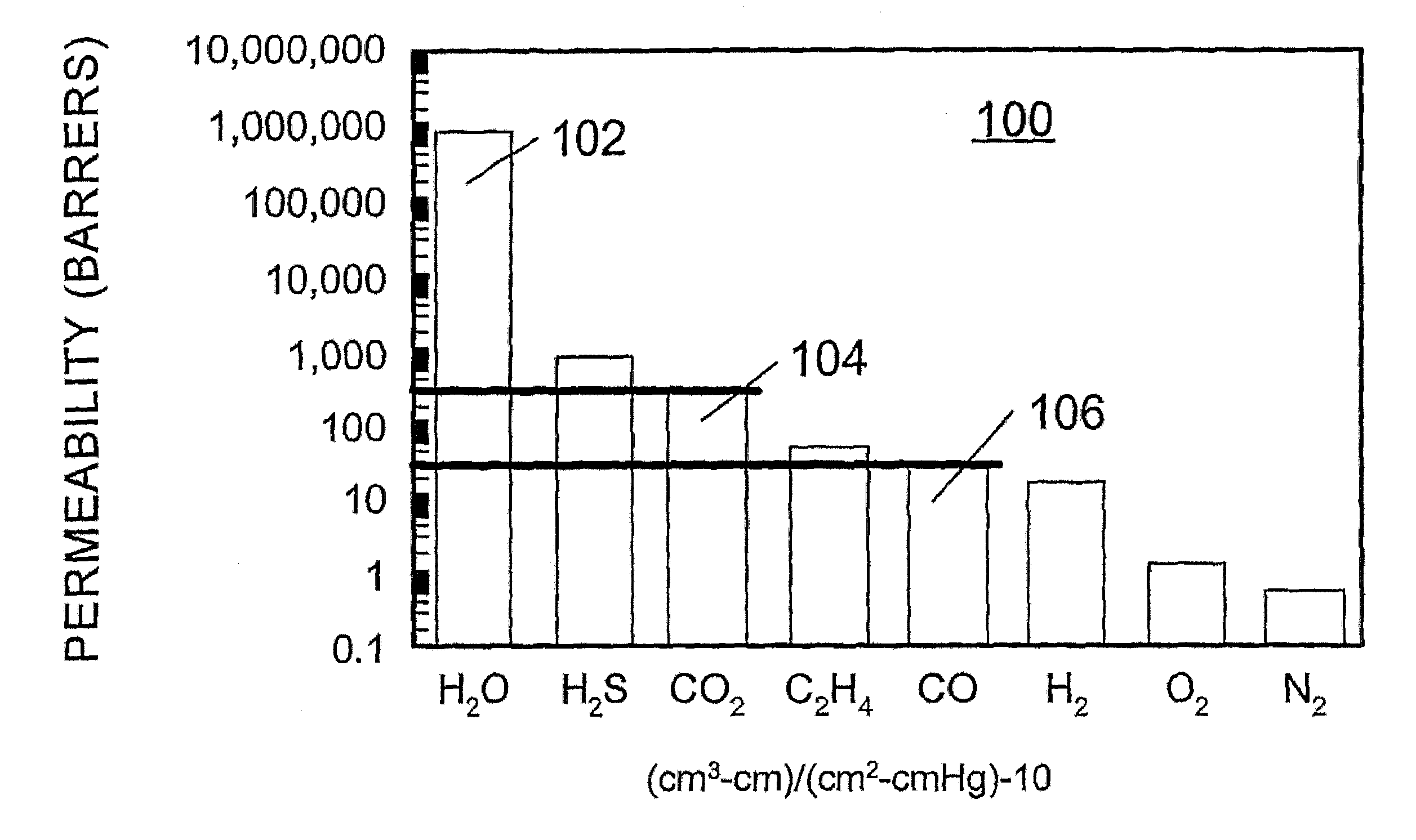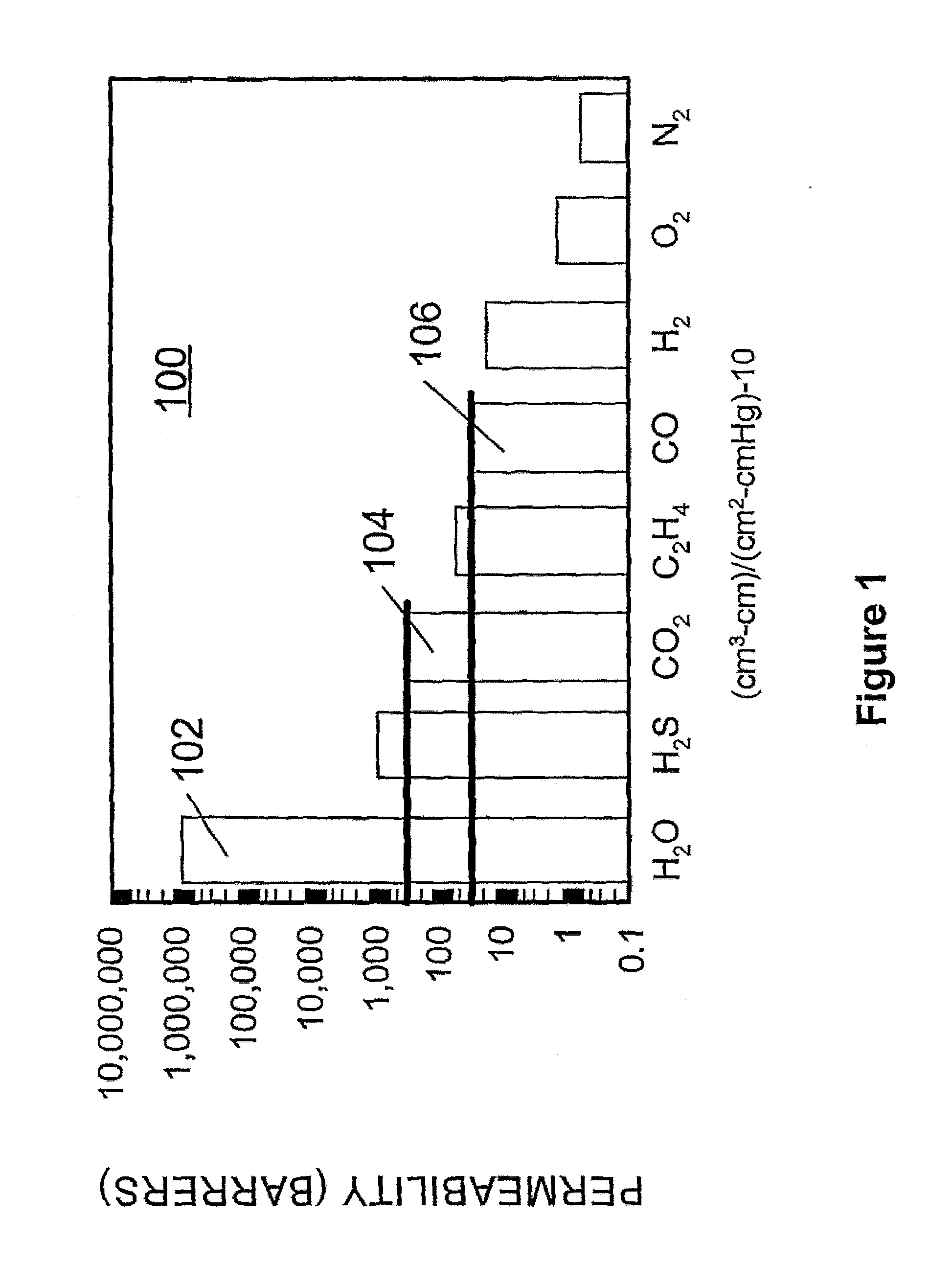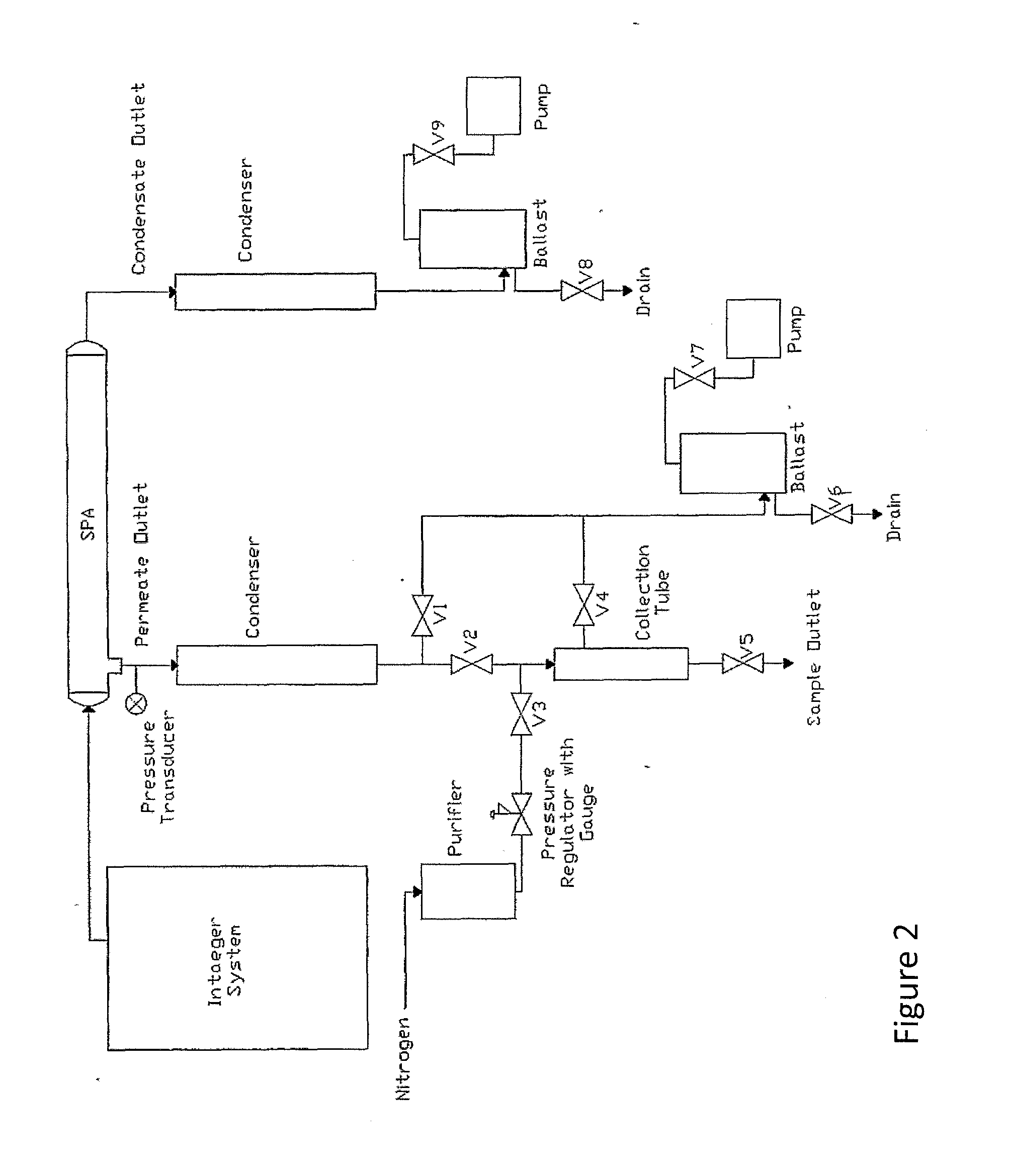Methods and devices for producing high purity steam
a high-purity, steam technology, applied in the direction of membranes, lighting and heating apparatuses, separation processes, etc., can solve the problems of high cost, difficult to achieve high-purity steam production, and difficult to remove these components, etc., to achieve high purity
- Summary
- Abstract
- Description
- Claims
- Application Information
AI Technical Summary
Benefits of technology
Problems solved by technology
Method used
Image
Examples
example 1
Removal of Metals from Steam
[0099]The apparatus of FIG. 11 was constructed to measure the production rate and purity of steam purified by a PFSA-TFE copolymer tubular membrane. Boiler 802, constructed of quartz, was heated by a quartz radiant heater 804. Deionized water 900 was boiled in vessel 802 to create a steam feed. Transducer 806 was employed to control and monitor the pressure of the steam feed. The steam feed was delivered to the inside of a Nafion® tube 808 measuring 0.110 inches (2.794 mm) OD with a wall thickness of 0.012 inches (0.3048 mm). Tube 808 had a length of 40 inches (1.016 m). Both ends of the Nafion® membrane tube 808 were terminated in bore through reducing tees 810 and 816. Membrane tube 808 was enclosed within a ¼″ (6.35 mm) Tefzel® outer tube 814 which was also terminated at each of Tefzel® tees 810 and 816. The steam feed was purified by transport from the inside of Nafion® tube 808, through its wall, to the annular region between the outer diameter of tu...
example 2
Linear Relationship Between Pressure Differential and Permeation Rate
[0102]In reference to Example 1, FIG. 8 is a chart of Upstream Pressure versus Purified Steam Flow Rate for the apparatus of FIG. 11. The upstream pressure is the absolute pressure of the impure steam, approximately equal to the pressure in the boiler 802. The pressure differential across the membrane tube 808 is approximately equal to this pressure minus the pressure inside outer tube 814, which for the conditions of the example is the vapor pressure of water at the temperature of the cooling water in condenser 818. The temperature of the cooling water in condenser 818 was 25° C., providing a pressure of about 23 Torr absolute pressure. By subtracting 23 Torr from the upstream pressure of FIG. 8, one can compute the pressure differential across the Nafion® membrane tube. This computation shows an approximate linear relationship between the pressure differential across the membrane and the purified steam flow rate....
example 3
Relationship Between Purging Headspace and Permeation Rate
[0103]In reference to Example 1, FIG. 12 is a chart depicting Purified Steam Flow Rate versus Time as a function of valve 824 open status, for the apparatus of FIG. 11. This chart illustrates the impact of the purge rate Fe on the permeation rate Fp of purified steam. The chart shows the results of a test where the flow resistance of valve 824 in the apparatus of FIG. 11 was varied from a closed position, to multiple open positions, over a period of time from about 20 minutes to about 260 minute. At data point 1102, Time=20 minutes, valve 824 is closed, and no purified steam is generated. At data point 1104 Time 40 minutes, valve 824 is opened 2 turns, and the purified steam production rate goes to 2.1 g / min. At data point 1106 Time=110 minutes, valve 824 is opened 2 additional turns to 4 turns, and the steam production rate increases to 2.4 g / min. At data point 1108 Time=120 minutes, valve 824 is opened 2 additional turns to...
PUM
| Property | Measurement | Unit |
|---|---|---|
| Fraction | aaaaa | aaaaa |
| Pressure | aaaaa | aaaaa |
| Flow rate | aaaaa | aaaaa |
Abstract
Description
Claims
Application Information
 Login to View More
Login to View More - R&D
- Intellectual Property
- Life Sciences
- Materials
- Tech Scout
- Unparalleled Data Quality
- Higher Quality Content
- 60% Fewer Hallucinations
Browse by: Latest US Patents, China's latest patents, Technical Efficacy Thesaurus, Application Domain, Technology Topic, Popular Technical Reports.
© 2025 PatSnap. All rights reserved.Legal|Privacy policy|Modern Slavery Act Transparency Statement|Sitemap|About US| Contact US: help@patsnap.com



